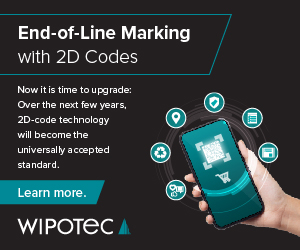Sustainable Plastics Are a Reality

Innovative developments in sustainable plastics are producing customizable and durable materials while maintaining a neutral or even negative carbon footprint. Image courtesy of INEOS Styrolution.
Post-consumer recycled (PCR) styrenics are closing the loop in the circular plastics economy.
By Ricardo Cuetos, Vice President Americas Polymers Sales Management with INEOS Styrolution
The plastics industry is committed to supporting a plastics circular economy. Companies today are actively pursuing sustainable material solutions to help them meet their sustainability goals and lower their environmental footprint.
For example, polystyrene is not only versatile, hygienic, and lightweight, but also has many inherently sustainable properties, enabling it to play an important role in designing sustainable products for recycling and lessening environmental impact.
Polystyrene is a valuable material that is indispensable to our modern way of life. Continuing to empower innovation across industries including food packaging, construction, healthcare and more — and this highly engineered material is also far more eco-friendly than many realize.
Polystyrene can be recycled multiple times
Unlike many other polymers, polystyrene can be recycled multiple times without losing its properties. It can be recycled through all major recycling technologies such as mechanical recycling, dissolution, depolymerization, and pyrolysis, offering flexibility in recycling processes. Additionally, advanced recycled polystyrene is safe for food contact applications.
Companies are actively seeking sustainable materials to align with their sustainability objectives, and styrenics suppliers are taking action.
Many companies are actively taking steps to significantly lower their operating and product footprints. For example, our organization has a corporate objective to achieve carbon neutrality by 2050 and offers sustainable materials produced using both post-consumer recycled (PCR) and renewable feedstock high-performance styrenics.

Innovative developments in sustainable plastics are producing customizable and durable materials while maintaining a neutral or even negative carbon footprint. Image courtesy of INEOS Styrolution.
Developments in sustainable plastics
Across the plastics industry, efforts are being made to expand the use of recycled and bio-attributed materials, and there is a growing base of customers using these innovative, sustainable materials today. These materials are created to be a drop-in solution and offer the same versatility as conventional plastics, with equivalent properties in terms of heat resistance, transparency, chemical and UV resistance, and impact strength, for example.
Innovative developments in sustainable plastics are producing customizable and durable materials while maintaining a neutral or even negative carbon footprint. They are finding applications in food and beverage packaging, drinkware and food storage, cosmetics, medical equipment, durable goods and more.
The styrenics industry is no longer wondering whether sustainable plastics can be produced. These materials already exist today. The goal now is to optimize these innovations. To promote the adoption of these new technologies and sustainable solutions.
The industry as a whole is committed to closing the loop on the plastics circular economy. By introducing materials with reduced carbon footprints and advancing recycling technologies to repurpose plastic waste, the goal of a more sustainable and circular plastics economy is becoming increasingly attainable.
About the Author
Ricardo Cuetos is vice president of the Americas polymers sales management team at INEOS Styrolution. Learn more at www.ineos-styrolution.com







